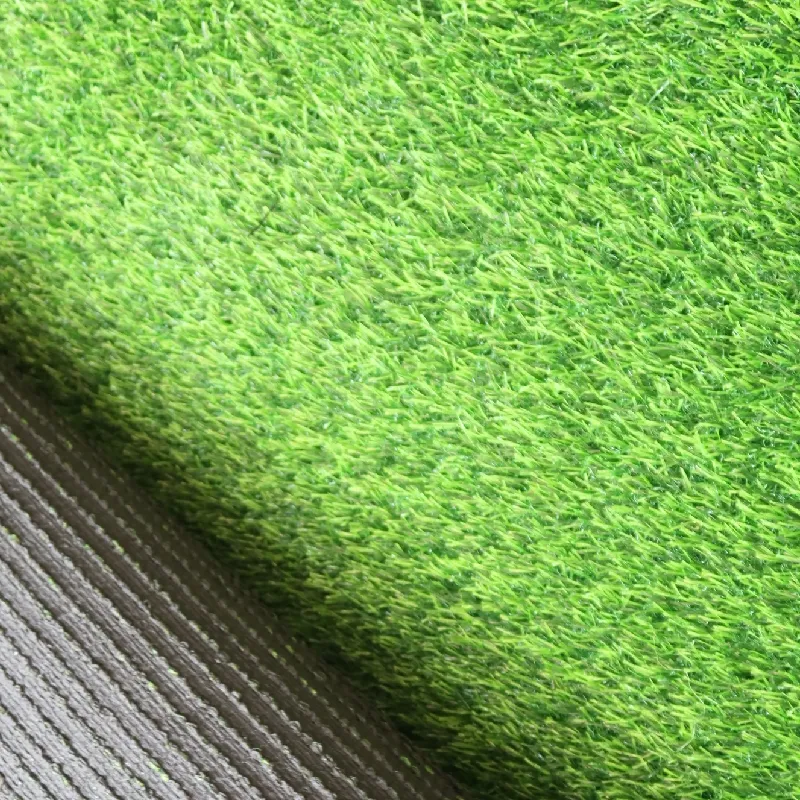
- Afrikaans
- Arabic
- Belarusian
- Bengali
- Czech
- Danish
- Dutch
- English
- Esperanto
- Estonian
- Finnish
- French
- German
- Greek
- Hindi
- Hungarian
- Icelandic
- Indonesian
- irish
- Italian
- Japanese
- kazakh
- Rwandese
- Korean
- Kyrgyz
- Lao
- Latin
- Latvian
- Malay
- Mongolian
- Myanmar
- Norwegian
- Persian
- Polish
- Portuguese
- Romanian
- Russian
- Serbian
- Spanish
- Swedish
- Tagalog
- Tajik
- Thai
- Turkish
- Turkmen
- Ukrainian
- Urdu
- Uighur
- Uzbek
- Vietnamese
laying artificial grass on grass
Dec . 17, 2024 12:05 Back to list
Laying Artificial Grass on Natural Grass A Comprehensive Guide
Laying artificial grass on top of natural grass has become an increasingly popular option for homeowners and businesses looking to maintain a lush, green appearance year-round without the challenging upkeep that natural grass demands. This method not only provides a visually appealing landscape but also reduces water consumption, minimizes maintenance, and offers a durable surface suitable for a variety of activities. In this article, we will explore the step-by-step process of laying artificial grass on existing grass, highlighting the necessary preparations, tools, and techniques.
Benefits of Laying Artificial Grass
Before delving into the installation process, let’s briefly discuss the benefits of artificial grass. One of the primary advantages is its low maintenance requirements. Unlike natural grass, which needs regular mowing, watering, and fertilization, artificial grass requires minimal upkeep, saving both time and money. Moreover, it is resilient to extreme weather conditions and remains green and lush regardless of the season. This makes it particularly appealing for homeowners in regions facing drought or harsh winters.
Preparation Steps
1. Assess the Area Before laying artificial grass, assess the existing natural grass. If the lawn is damaged, uneven, or filled with weeds, it may be beneficial to remove it entirely. In some cases, you can flatten out the grass by mowing it down to the roots, but thorough inspection is necessary.
2. Clear the Area Remove debris, rocks, and any existing furniture from the area where you plan to install the artificial grass. If you're leaving the natural grass in place, ensure that it is free of weeds and that the turf is in decent condition.
3. Mow the Natural Grass If you choose to keep the existing grass, mow it as low as possible. This will help create an even surface for the artificial turf and reduce the chances of the natural grass growing through the new layer.
4. Weed Control Apply a weed killer to the area to ensure that no unwanted growth can penetrate the artificial turf once it is laid. It's essential to wait for a few days after applying the weed killer to ensure that the chemicals have taken effect before proceeding.
5. Base Layer Preparation You might want to add a base layer, such as decomposed granite or sand, to create a level and stable foundation. This is especially important if the existing grass has any humps or dips.
laying artificial grass on grass

Installation Process
1. Measure and Cut the Artificial Grass Measure the area where the artificial grass will be laid and cut the grass to size, leaving a bit of extra material around the edges for adjustments later.
2. Lay the Artificial Grass Position the cut pieces of artificial grass on the prepared area. Ensure that the fibers of the grass are facing the same direction for a more natural look. Adjust the pieces as necessary until they fit snugly together.
3. Seaming the Edges If using multiple pieces, use adhesive tape or seam glue to connect the edges of the artificial grass. Press down firmly to ensure a strong bond.
4. Secure the Grass Use ground nails or staples to secure the edges of the artificial grass. Place them approximately every 12 inches along the perimeter to prevent any movement or lifting.
5. Infill Application Depending on your type of turf, you might need to add infill material such as silica sand or rubber granules. This serves multiple purposes—providing stability, helping the blades stand upright, and enhancing water drainage.
6. Final Grooming After laying the infill, use a broom or brush to spread it evenly and fluff the grass fibers. This step helps to enhance the appearance and ensure that the grass looks as natural as possible.
Conclusion
Laying artificial grass over natural grass can be a practical and efficient way to enjoy a beautiful, maintenance-free lawn. By following the above guidelines, you can successfully transform your outdoor space while reaping all the benefits that artificial grass has to offer. Whether you have a backyard, playground, or commercial property, this installation method can elevate your landscape, providing a soft and green oasis for leisure and recreation.
-
The Benefits of Artificial Turf for Indoors
NewsJul.15,2025
-
How Artificial Grass Suppliers Ensure Quality Products
NewsJul.15,2025
-
Artificial Grass and Pets: A Space for Relaxation
NewsJul.08,2025
-
Balcony & Outdoor Decoration with Artificial Grass
NewsJul.08,2025
-
Best Indoor Artificial Grass for Home
NewsJul.07,2025
-
Best Pet Turf for Dogs: Safe & Durable Artificial Grass Options
NewsJul.07,2025
Products categories









